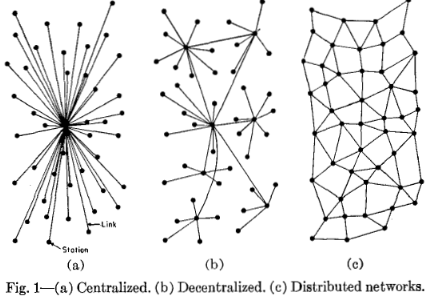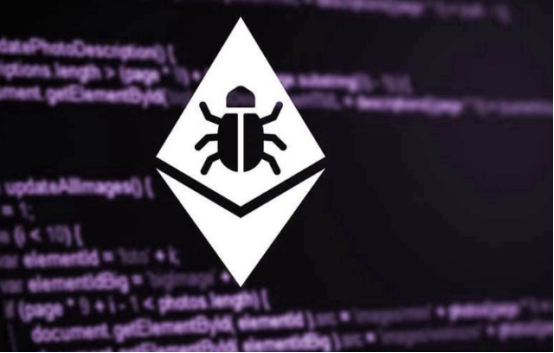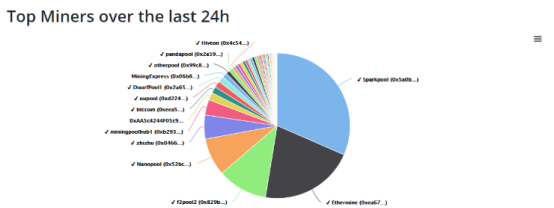Ethereum's six myths: is decentralization really omnipotent?
Source: Crypto Spotlight
Compilation: First Class (First.VIP)
In the hype surrounding the blockchain and its potential use cases, rumors about Ethereum's "decentralization" are endless. This article aims to uncover the reality under the hype.
Ethereum is actually more fragile than we thought. Here are six myths about this second largest cryptocurrency.
- Interview with Ms. Bitcoin in Japan's Cryptocurrency Circle: Crazy learning, continuous pursuit, and efforts to build a trusting society | 8 questions
- Bitcoin miner story: Miner's loss of one million yuan sadly exits, "downlord" profit returns 10 million full
- Will Bitcoin's "magic December" bring us another long-term turning point?

Blockchain and decentralization are no different today. But can we say that decentralization is absolute? Is unbreakable decentralization a myth or reality? Technology makes it possible to build a network where everyone is equal, and all information is distributed on different computers around the world. This feature is extremely valuable to banks and other business organizations as it increases the security and speed of operations.
Ethereum is more decentralized than Bitcoin, which is no doubt. This can also be demonstrated in a previous study published by Professor Emin GürCyrer, which digitally revealed the degree of decentralization of the two systems.
In the past year, the crypto community and developers have raised questions about decentralization multiple times. Is unbreakable decentralization a myth or reality? For easy understanding, let's take a look at the creator of Ethereum and its decentralized concept.
Myth 1: Decentralization is a distributed network
Ethereum founder V God once expressed many important points on his Medium blog about the necessity of decentralization and how to achieve decentralization:
"Decentralization is one of the basic concepts of blockchain.Most of the research and development is to create and improve it, but the exact meaning of the word is still in doubt."
He also gave a "most ridiculous but most common" visual explanation of decentralization (see the figure below for details), which users and even developers are using. Although the last two images should be exchanged with each other, "decentralization" means that no node can control all transaction processing in the network.

(A is a centralized network, b is a decentralized network, and c is a distributed network)
Misunderstanding 2: Blockchain can resist errors
Developers themselves are confused about the definition of decentralization, so what should we do? V God has its own classification criteria-the following three points can determine whether the network is centralized:
Decentralized architecture: how many computers are on the network? How many of these computers may not make the system stable? Political decentralization: How many people or organizations control the computers that make up the system? · Logical decentralization: Is the data structure more like a whole or a relationship between individual objects? If half of the system (including vendors and users) is cut off, can it continue to work?

Centralization of architecture usually leads to political centralization, although this is unavoidable in the computer community (but from the perspective of logical centralization, this will make it difficult to decentralize architecture and politics).
Why decentralization is so important:
· Collusion is difficult. Participants in a decentralized system are unlikely to collude with each other to jointly influence the development of the system. Defend against attacks. It is almost impossible for an attacker to paralyze the entire system, but in a centralized network, a central point of attack is sufficient. · Resist errors. Because many computers can provide uninterrupted operation at the same time, the chance of an unexpected failure is almost zero.
It all sounds simple. But at the protocol level, things are different. If for a reason a large number of computer components fail at the same time, the fault tolerance of the blockchain itself will be useless.
God V gave a real-life example: if in a plane crash, four engines fail at the same time (of course this is impossible). But what if all four engines were assembled in the same factory by the same irresponsible worker? Then the entire shipment is defective, and all parts are likely to fail at the same time. The end result will be disastrous.
Misunderstanding 3: Ethereum network can resist various attacks
The fact that Ethereum is vulnerable to attacks was widely known in September 2016, when serial DDoS attacks launched at the time severely delayed node work. To use PoS algorithms instead of PoW to effectively defend against attacks, this is one of the reasons Ethereum is now turning to PoS. At the same time, after a series of failed attempts, Ethereum finally found a solution:
"We made changes to the mining process. Now when miners find that it takes more than 5 seconds to mine a block, they will automatically reduce the x2 fuel cost limit. This allows the system to be rebuilt automatically, just like today's systems . "
Ironically, however, a year later, on October 4, 2017, the Ropsten test network suffered a new attack, and the purpose of this attack was only to test the new Byzantine update code, which could have been achieved by increasing fuel costs. Prevent such attacks.
Myth 4: There is no conspiracy theory
Ethereum no longer adopts independent mining methods: miners jointly form large and small mining pools. Large miners pose a great threat to decentralization because they can bring together the capabilities of all miners associated with it.
For example, a pool operator can pack only the transactions he needs in the formed block. So for many mining pools, one of the goals of mining today is to ensure distributed output blocks.

Nearly 70% of the computing power in the network belongs to only a few large pools. This applies to almost any cryptocurrency, and its complexity is far beyond what it can control, that is, independent mining can no longer generate any profit. Therefore, the owner of the mining pool can influence the network strategy.
Myth 5: Only the crypto wallet owner can use his funds
One of the characteristics of cryptocurrencies is that no one can use other people's funds for any transaction. In most tokenized systems, this is due to the scheme that each transaction entity should be able to perform operations in a manner that satisfies the requirements of previous transaction entities. This means having a private key and avoiding repeated transactions or theft.
Ethereum has mature smart contracts. A "smart contract" is a program that is executed at the beginning of a transaction. In addition, it is the main "building material" for creating decentralized applications (dApps).
In terms of safety and convenience, this technology has many advantages, but also has minor defects. The holder of the digital wallet is not the full owner of the funds, and the funds are kept by the contract, which is contrary to the original principles of cryptocurrencies.
In theory, a running contract can perform any operation without user consent. Of course, we can also use open source software such as a blockchain browser to check the correct operation of the contract, but not everyone can do it. The solution to this problem is to create only one audit contract, but we have already achieved it.
Myth 6: Ethereum network cannot be manipulated
At the end of 2017, the online game Crypto Cat accounted for over 13% of Ethereum's traffic and was titled the "Ethereum Killer". The popularity of decentralized applications depends on simple and unique features, such as allowing users to breed various offspring of virtual kittens. The more unique the offspring that breeds, the greater the reward the owner gets. Because the characteristics are not fixed, each cat is unique.

So what went wrong? First, the huge demand for crypto cats has increased the queue of waiting transactions, which must wait to be packed in blocks. At the same time, the owner of the crypto cat who wants to be packaged into the block has to pay a large commission. This increases the transaction costs of all network users and causes transaction "clogging".
We should not underestimate the potential threat posed by this application. Developers have full control over games and smart contracts. The price of crypto cats keeps rising, and each contract can be frozen by developers at any time. They can freeze games and user accounts at any time, and they can modify closed code.
Reprinted please retain copyright information, thanks for reading.
We will continue to update Blocking; if you have any questions or suggestions, please contact us!
Was this article helpful?
93 out of 132 found this helpful
Related articles
- Heavy! Wuzhen Lands The First "Blockchain" Theme Pavilion In China
- Babbitt Column | Big End of 2019: Technology Curve Rise Again
- How should the public chain be regulated?
- Monero's "Decentralization Movement": Lead Developer Riccardo Spagni Retires
- Tencent original works blockchain copyright deposit certificate released
- Read the relationship between the IMF and the digital currencies of central banks
- Featured | Cryptium Labs: Ethereum Foundation is unable to fund core development; 5 predictions for DeFi in 2020






